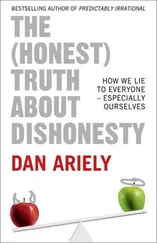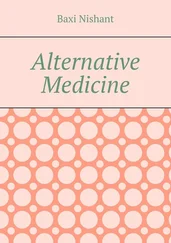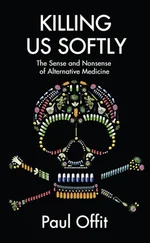Finally, it is also worth mentioning a much rarer, but more serious problem. There are a few doctors who are genuinely convinced of the power of alternative medicine, despite the lack of evidence. In the most extreme cases, they will apply unproven treatments in the most inappropriate cases, thereby jeopardizing the health of patients. There are appalling instances of this from around the world, including the case of Sylvia Millecam, which was discussed earlier in this chapter. Three of the alternative therapists who treated Sylvia before her death had a formal medical background, so they were brought in front of the Amsterdam Medical Disciplinary Tribunal after her death. This resulted in one of them being struck off, while the other two were suspended. Similarly, in 2006, the UK’s General Medical Council considered the behaviour of Dr Marisa Viegas, who had become a practising homeopath with her own private clinic. Dr Viegas had advised a patient to replace her heart medication with homeopathic remedies, and a short time later the patient died. The General Medical Council declared that she had died of ‘acute heart failure due to treatment discontinuation’, and therefore they suspended Dr Viegas.
8 Alternative medicine societies
A plethora of societies around the world claim to represent practitioners of various alternative therapies. In the UK alone there are about one hundred! They could be a huge force for good, helping to establish high standards, promoting good practice and ensuring ethical principles. They could also encourage the further testing of alternative therapies for both efficacy and safety. In particular, these societies should be clarifying what their practitioners can treat and confirming which conditions are beyond their abilities. Instead, far too many of them make unsubstantiated claims for their particular therapy and allow their practitioners to conduct all manner of inappropriate interventions.
All of these problems exist, for example, among the societies who represent chiropractors around the world. The chiropractic societies have so far failed to establish systems for recording the adverse effects of spinal manipulation, which would at least help to gauge accurately the hazards associated with chiropractic therapy. Moreover, as mentioned in Chapter 4, a UK survey shows that an intolerably high percentage of chiropractors violate the essential ethical and legal principle of informed consent. Yet the General Chiropractic Council does not seem to take action. And the General Chiropractic Council continues to promote chiropractic therapy for various inappropriate conditions, despite the lack of any evidence. Its website claims that chiropractic care can offer ‘an improvement in some types of asthma, headaches, including migraine, and infant colic’ — this is simply not true.
The American Academy of Medical Acupuncture makes even more exaggerated claims, citing a long list of medical conditions that ‘have been found to respond effectively to Medical Acupuncture’, which includes insomnia, anorexia, allergic sinusitis, persistent hiccups, constipation, diarrhoea, urinary incontinence, flatulence and severe hyperthermia. Again, of course, there is no significant evidence to support the use of acupuncture for any of these conditions.
It is also worth noting that many of these societies have generally been weak (possibly negligent) in terms of exposing bad practice. Worse still, when the Society of Homeopaths, based in Britain, was criticized for not taking a firm stand against the inappropriate use of homeopathy, it decided to suppress criticism rather than to address the central issue. Andy Lewis, who runs a sceptical and satirical website (www.quackometer.net), had written about the Society and the issue of homeopathic malaria treatments, which resulted in the Society asking the company that hosts his website to remove the offending page. In our opinion, the Society needs to improve in three ways. First, it ought to police its practitioners more thoroughly. Second, it ought to act publicly and promptly when serious complaints are made. Third, it should listen to its critics rather than silence them.
The community of scientists, on the other hand, encourages criticism and debate within its own ranks. For example, in 2007 the Cochrane Collaboration established the Bill Silverman Prize ‘to acknowledge explicitly the value of criticism of The Cochrane Collaboration, with a view to helping to improve its work, and thus achieve its aim of helping people make well-informed decisions about health care by providing the best possible evidence on the effects of healthcare interventions’. In stark contrast to the community of alternative therapists, here is an organization offering a prize for those who criticize its work. Bill Silverman, you may remember, was the paediatrician who questioned his own theories on caring for premature babies and indeed proved himself wrong.
As well as, in our opinion, inadequately policing its own ranks, it seems that the Society of Homeopaths encourages bad practice. It appears to promote misleading, inaccurate and potentially dangerous ideas. In 2007, on World AIDS Day, the Society organized an HIV/AIDS Symposium in London. A spokeswoman for the Society claimed that the conference was about alleviating the symptoms of AIDS. In fact, there is not a shred of evidence to suggest that homeopathy can ease AIDS symptoms. Worse still, the conference discussed far more ambitious claims. The speakers were Hilary Faircloch, a homeopath who already works with HIV patients in Botswana; Jonathan Stallick, author of a book entitled AIDS: the homeopathic challenge ; and Harry van der Zee, who believes that ‘the AIDS epidemic can be called to a halt, and homeopaths are the ones to do it’. The last thing that HIV/AIDS sufferers need is false hope and barmy remedies.
9 Governments and regulators
In his book Bad Medicine , the historian David Wootton writes, ‘For 2,400 years patients believed that doctors were doing them good; for 2,300 years they were wrong.’ In other words, for most of our history, most medical treatments have failed to treat most of our diseases effectively. In fact, most of the doctors from previous centuries harmed rather than healed our ancestors.
The turning point came with the arrival of scientific thinking, the clinical trial and government regulation to protect vulnerable patients from harm — both physical and financial. The snake-oil salesmen were gradually driven out of business and mainstream medicine was forced to show that its treatments were both safe and effective before they could be employed.
In some instances, it required tragic events in order to bring about regulation. Or, as Michael R. Harris, historian of pharmacy at the Smithsonian Institution, put it, ‘The story of drug regulation is built of tombstones.’ For example, in 1937, a Tennessee-based pharmaceutical company called S. E. Massengill Co. used diethylene glycol as a solvent in the production of a new antibiotic called Elixir Sulfanilamide. There were no regulations requiring pre-market safety testing, so the company only became aware that the solvent was toxic when patients began to report serious side-effects. Typically, children were taking the elixir for a throat infection and were then suffering kidney failure and going into convulsions. The error caused over 100 fatalities, including the death of the company’s chemist, Harold Watkins, who committed suicide when the scandal emerged. The following year American legislators passed the Federal Food, Drug, and Cosmetic Act, which allowed the Food and Drug Administration (FDA) to demand proof that new drugs were safe before going on sale. Regulations were still inadequate in many other parts of the world, but the Thalidomide tragedy of the 1960s compelled many other governments to bring in legislation. The UK Medicines Act of 1968, for instance, was a direct consequence of the Thalidomide disaster.
Читать дальше











